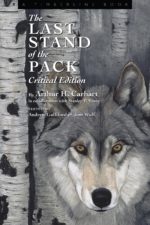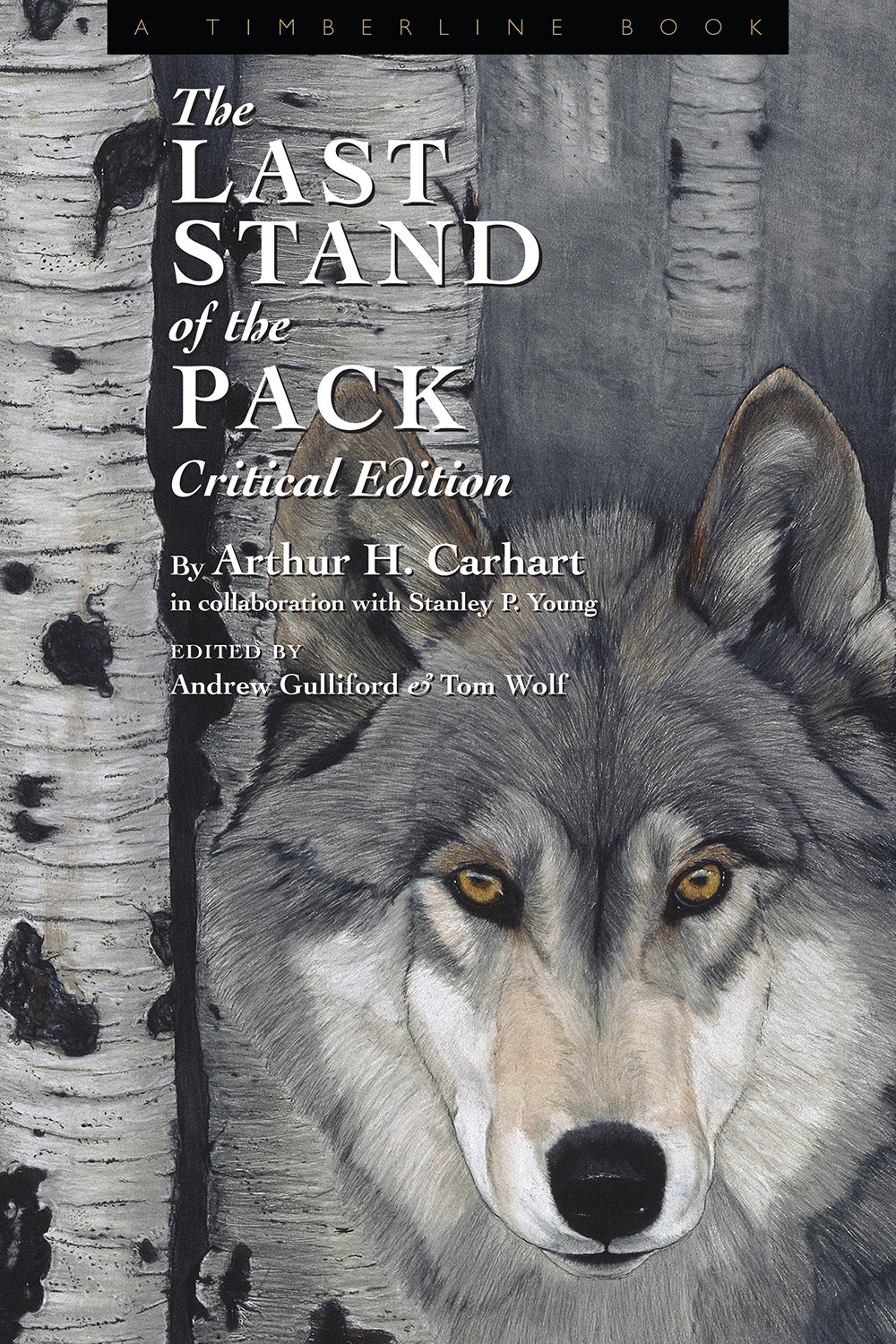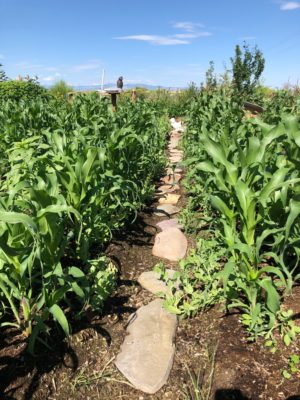The Last Stand of the Pack
By Arthur H. Carhart
University Press of Colorado Press, 2017
ISBN: 978-1-60632, paper
Reviewed by Virginia McConnell Simmons
Readers of outdoor West literature value several well-known authors, whose works are like bibles for anyone with concern about what is left of unspoiled landscapes and wildlife that once inhabited them. Among such writers are apostles like Aldo Leopold and iconoclasts like Edward Abbey. Less familiar today, but popular and respected among writers in Colorado, was Arthur H. Carhart, an early–day environmentalist with an enthusiastic band of readers among fishermen, Colorado’s recreationists and conservationists.
 Like Leopold, Carhart was from the Midwest and fell in love with the West’s nature. Both found jobs with the U.S. Forest Service. Leopold was higher on the regional USFS ladder, but offered important support for Carhart’s ideas. Another significant figure in Carhart’s career was the no-nonsense Stanley P. Young, who had risen in the ranks of the U.S. Bureau of Biological Survey, and understood thoroughly the facts about science, political issues, ranchers and wolves. Such contention exists again, many decades after Carhart’s book, “The Last Stand of the Pack,” was published with the collaboration of Young in 1929.
Like Leopold, Carhart was from the Midwest and fell in love with the West’s nature. Both found jobs with the U.S. Forest Service. Leopold was higher on the regional USFS ladder, but offered important support for Carhart’s ideas. Another significant figure in Carhart’s career was the no-nonsense Stanley P. Young, who had risen in the ranks of the U.S. Bureau of Biological Survey, and understood thoroughly the facts about science, political issues, ranchers and wolves. Such contention exists again, many decades after Carhart’s book, “The Last Stand of the Pack,” was published with the collaboration of Young in 1929.
Carhart’s professional training was as a landscape engineer, though, and his first attention-getter as an employee of USFS was a project on behalf of scenic Trappers Lake in White River National Forest, where he advocated protecting fish and public use by keeping the area of the lake unspoiled, rather than allowing it to be ringed with summer cottages as was occurring elsewhere. His opinions and planning brought Carhart to the attention of Leopold and others who shared similar environmental concerns.
Another important development was Carhart’s departure from the USFS, and his concentration on freelance nonfiction writing about wildlife and the environment. His spellbinding narratives about wolves, trappers, trapping, and the eradication of the lobos in Colorado appeared in “The Last Stand of the Pack,” published in book form in 1929, with the collaboration of Stanley Young.
[InContentAdTwo]
In both the original edition and this new one, are Carhart’s stories about Old Lefty, Whitey, Rags the Digger, Unaweep, Bigfoot, Three-toes, Gray Terror, the Phantom, and Greenhorn. Some earned the reputation of rogues. Some died in the gun sights of ranchers and government trappers. Some were on the Western Slope on the arid Colorado Plateau, some in mountain forests, and some in grasslands like southeastern Colorado’s. The last of Colorado’s native wolves died in a trap east of Greenhorn Mountain, not far from Central Colorado. And then they were gone.
A new chapter in the present volume has been written by authorities about restoration programs. There are also several useful pages of footnotes, a bibliography, and, index, which were not in the 1929 edition. These additions will add greatly to the volume’s usefulness for professionals who are working in wildlife management, as well as for general readers with a passion for wolves. Tom Wolf (yes, that’s his real name), one of the contributors, teaches at Colorado College and deserves special recognition for his contributions.
This book is a winner for anyone interested in wolves and the environment.




